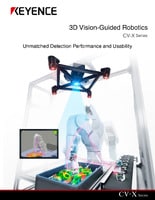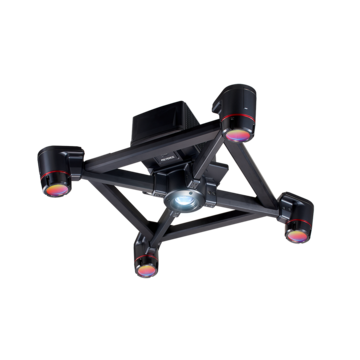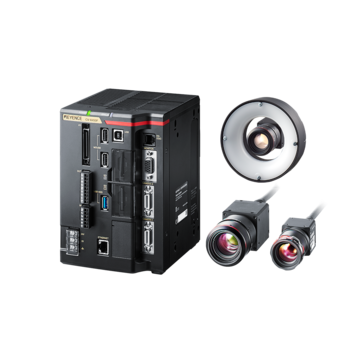Vision Systems
- Vision System with Built-in AI VS series
- Intuitive Vision System CV-X series
- Customizable Vision System XG-X series
- GigE camera and lighting for PC-based machine vision VJ series
- Inline 3D Inspection 3D Vision series
- 3D Vision-Guided Robotics 3D VGR series
- Line Scan Technology Line Scan series
- 2D Vision-Guided Robotics 2D VGR series
- LED Lighting CA-D series
- Lenses (for Machine Vision) CA-L series
- Machine Vision System Database VisionDatabase series
- Automotive
- Automation Equipment/Machine Building
- Electric Vehicles
- Medical Device Manufacturing
- Food/Beverage Packaging
- Semiconductor/Manufacturing Electronics
- Vision-Guided Robotics
- Solar
- Logistics
- Commodities
- Paper Manufacturing
- Machine Tools
- Electronic Device
- Printing
- Mining/Metals
- Fabric/Textile
- Tobacco
- Marine
- Aerospace
Robot-Guided 3D Machine Vision Applications
Industrial robot-guided applications replicate skilled human tasks, especially those that rely on extensive knowledge, experience, skill, and sometimes, even some intuition. However, those tasks have been challenging to automate, especially since robots don't interpret and interact with the world like humans do.
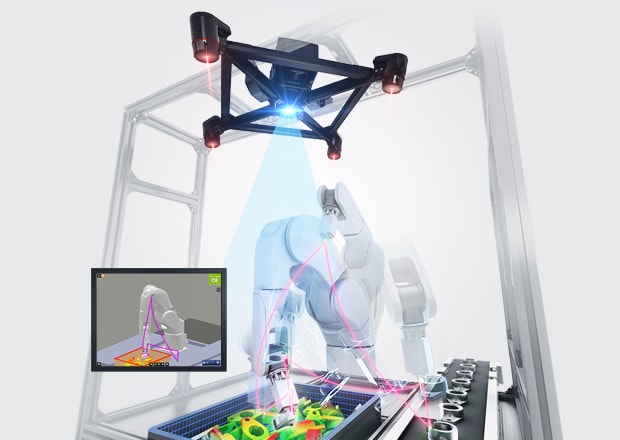
Thanks to the rise of 3D machine vision and the integration of machine learning and artificial intelligence, emulating skilled tasks is more than a possibility—it's a reality that unlocks unprecedented opportunities in the industrial world.
Robot-guidance systems with 3D machine vision are now taking automation to a whole new level across numerous industries. Let’s discuss various 3D machine vision applications in relation to these technologies.
Applications of 3D Machine Vision in Robot Guidance
3D machine vision has extensive use in 3D robot guidance across numerous industries. This often makes the applications circumstantial; however, most 3D machine vision applications in robot guidance also perform what are considered basic tasks. Read below to learn more:
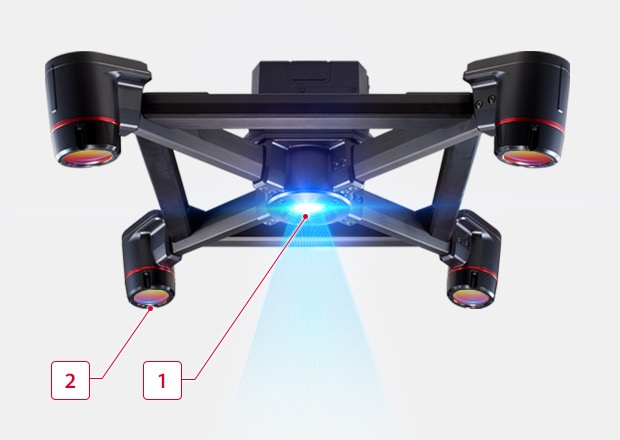
Advanced Object Detection Capabilities
Unlike traditional 2D vision systems, 3D machine vision applications for robot guidance rely on height data to help robots understand the size, shape, position, and orientation of objects in their environment.
The added depth perception enables robots to differentiate between objects that are visually similar but spatially distinct, enhancing their ability to sort, pick, and place items with a high degree of accuracy. For example, KEYENCE's CV-X Series 3D Vision-Guided Robotics relies on an integrated design consisting of four different cameras and a single projector.
-
1Projector
-
24 cameras
This, paired with fast processing speeds, allows the system to detect multiple products within the bin. The ideal image settings are automatically selected to eliminate any blind spots and even account for the difference in product color, material, and shape. This also allows for the stable search of target workpieces, regardless of their position or orientation within the bin or package.
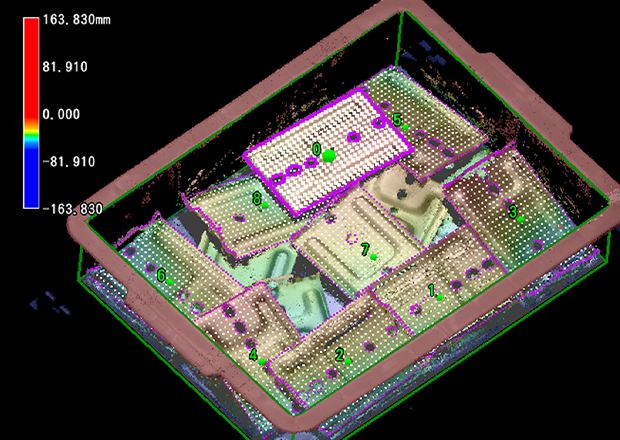
Rapid Image Processing and Decision-Making
Object recognition is also enabled by incredibly fast processing speed, which affects decision-making. The newly developed 3D scanning function calculates the optimal solution from 136 captured images in 0.5 seconds, which significantly increases production efficiency.
This 3D machine vision application is facilitated, at least partially, by the high-precision CMOS sensor with high pixel density and low noise. The sensor picks up images from the four cameras positioned at different angles, which eliminates blind spots and allows for the creation of stable 3D images.
These images are then processed by the high-speed processor, delivering ultra-fast 3D calculations. The high-speed, high-precision KEYENCE-developed algorithms then generate a single 3D image from 136 unique images taken over a span of 0.5 seconds.
Speed and efficiency in processing 3D images are crucial for real-time robotic operations, and leveraging the aforementioned technologies allows robots to make immediate decisions based on dynamic environmental data.
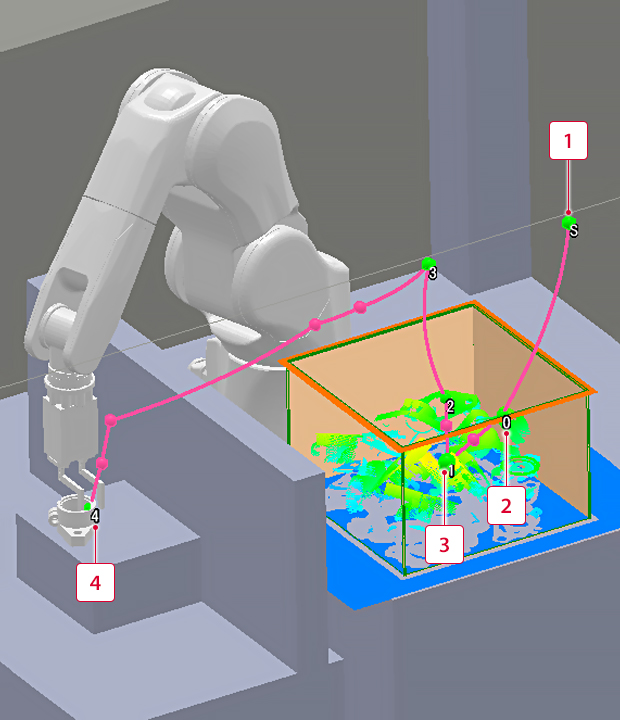
Efficient Robot Movement Planning
Integrating 3D machine vision with robot guidance systems significantly improves the efficiency of robot movement planning, as it allows robots to predict and navigate around various obstacles, optimize their paths, and minimize energy consumption, in addition to adjusting their trajectories in real-time.
Automatic path planning implies automatic robot movement calculations, which also take peripheral equipment and the robot's current position into account. Furthermore, the accompanying software usually allows you to build the surrounding environment to ensure that the objects gripped by the robot don't hit the surroundings.
-
1Start position
-
2Approach position
-
3Grip position
-
4Place position
KEYENCE's software requires no previous or specialized knowledge and allows you to position the robot, the container, and various obstacles on the computer’s screen. Additionally, you can also adjust the robot's grip position for the target and even set it up in multiple orientations.
There's no need to manually move the robot to teach it how to pick up the objects and interact with its surroundings. Everything can be done from the accompanying software, which significantly increases set-up speed, especially compared to conventional teaching methods.
In fact, you only need to add specific points to move to; the robot and its accompanying software will calculate all the in-between waypoints, taking into account the robot's surroundings and position at each waypoint.
Precision Handling of Complex Targets
One of the most significant advantages of 3D vision-guided robotics is its precision handling of complex targets. As previously mentioned, you can easily teach the robot to grip the object from multiple different points, which is important when the guided robot is tasked with assembling intricate components.
This ranges from simple pick-and-place operations for the electronics industry, where parts are taken from an arranged carrier tape and placed onto the PCB, to more complex operations, like picking up a component from a bin and fitting it into a more complex assembly.
You can complement your 3D vision-guided robot with a 2D machine vision camera for gripping misalignment correction. This allows the robot to precisely position and grip a particular part or component after bulk picking. It simultaneously inspects the part and identifies the correct orientation before placement or fitting.
In short, the ability to precisely handle complex targets empowers 3D robots to execute tasks with a level of accuracy and speed that surpasses human capabilities while eliminating human error.
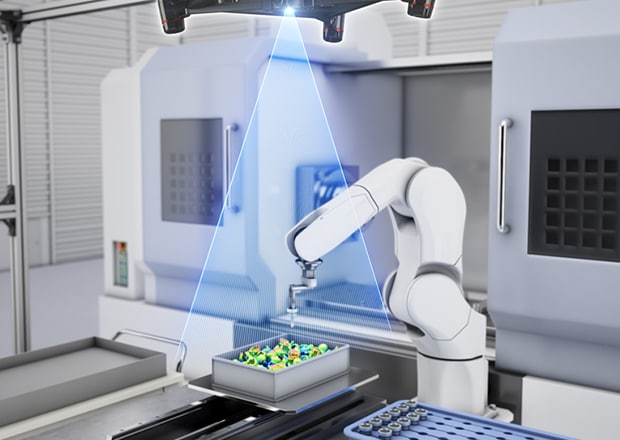
Machine loading
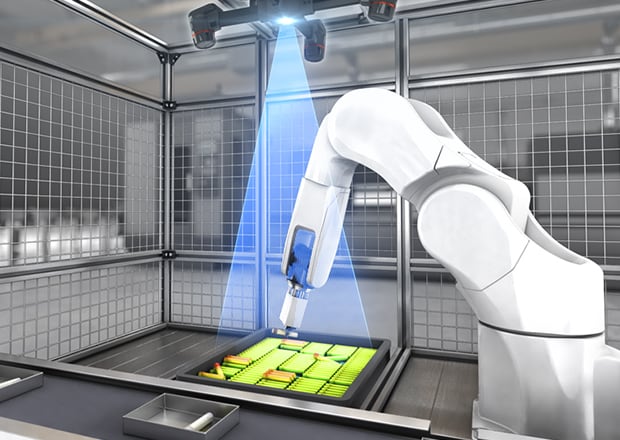
Kitting of multiple parts
Explore KEYENCE's 3D Vision Guided Robotics
3D machine vision applications are very industry-specific, but in most cases, these systems perform basic 3D machine vision tasks —most of which are related to quality assurance and quality control.
If you want to learn more about 3D machine vision applications across various industries, KEYENCE offers a comprehensive range of 3D machine vision solutions that ensure precision, accuracy, reliability, and repeatability, as well as the utmost quality assurance and quality control.
Contact KEYENCE and inquire about possible integrations of their 3D machine vision into your pre-existing production systems.
Contact us to learn more about how our advanced technology can help take your business to the next level.
Contact Us
Related Downloads
Related Products
Industries
- Automotive
- Automation Equipment/Machine Building
- Electric Vehicles
- Medical Device Manufacturing
- Food/Beverage Packaging
- Semiconductor/Manufacturing Electronics
- Vision-Guided Robotics
- Solar
- Logistics
- Commodities
- Paper Manufacturing
- Machine Tools
- Electronic Device
- Printing
- Mining/Metals
- Fabric/Textile
- Tobacco
- Marine
- Aerospace

